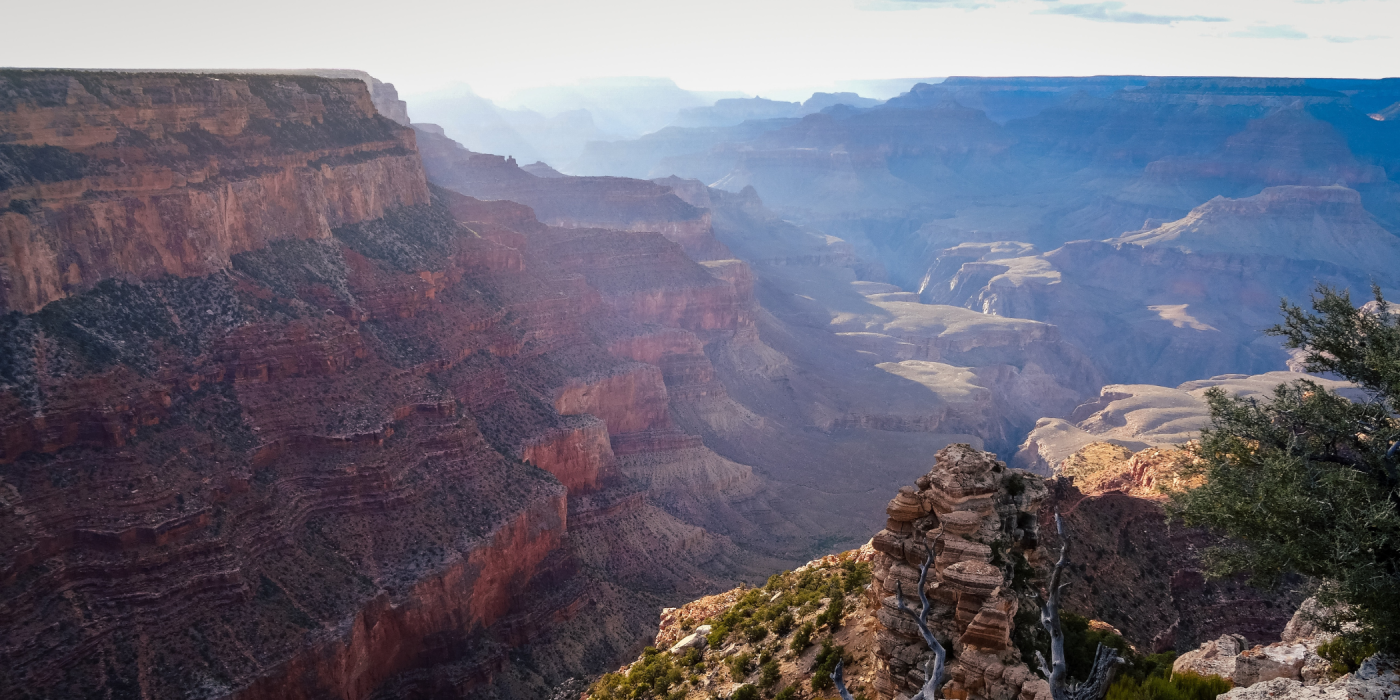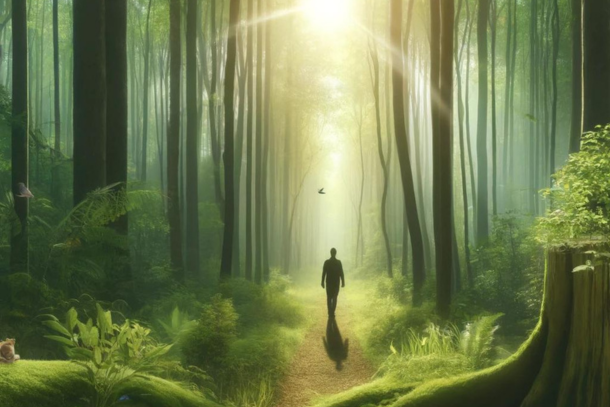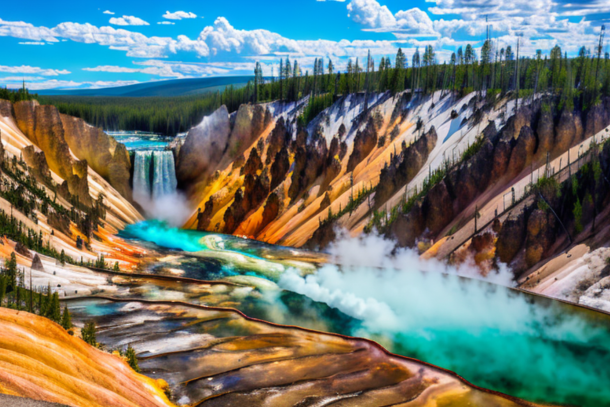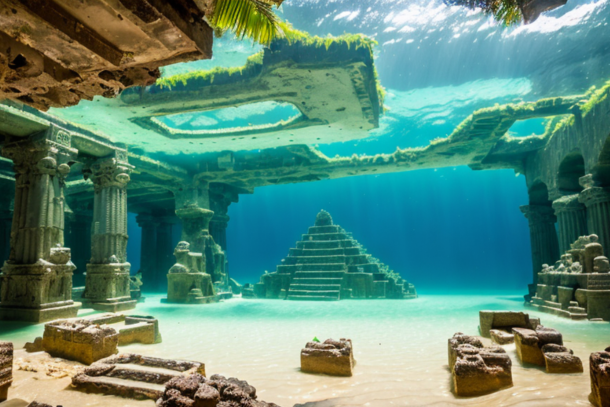Eternal Allure: Reflecting on the Grand Canyon’s Significance

In the vast tapestry of our planet's geological wonders, few stand as prominently as the Grand Canyon. This awe-inspiring landmark, with its vast expanse and layers upon layers of earth's history, serves as a testament to the relentless power of nature and the passage of time.
A Testament to Time
The Grand Canyon, carved over millions of years by the Colorado River, showcases an intricate dance of erosion and sedimentation. It's a grand theatre where one can witness, in its rust-hued walls, a record of epochs gone by, each layer telling its own tale.
More than Just a Canyon
Yet, it isn't solely a geological spectacle. The Grand Canyon, with its majestic beauty, has long captured the human imagination. It is deeply woven into the tapestry of native cultures, folklore, and contemporary society. From ancient Native American tribes who considered it sacred to the modern travellers who venture to its edge for a glimpse into Earth's profound history, it's a place of reverence and wonder.
A Global Icon
Its reputation isn't just confined to the United States. Globally, the Grand Canyon is celebrated as one of the great natural wonders, drawing visitors from all corners of the world. Its vastness and beauty resonate universally, a reminder of our shared human heritage and our enduring connection to this ancient land.
In the chapters that follow, we shall delve deeper into the facets that make the Grand Canyon the unparalleled geological wonder that it is today.
Formation & Geology
The Grand Canyon, often heralded as one of the world's most impressive natural wonders, is more than just a sight to behold. It's a testament to the unyielding power of geological forces that have moulded our planet over aeons.
The Role of the Colorado River
The primary architect behind this grand design is the Colorado River. Winding its way through the American Southwest, this relentless river has been cutting through the rock, sediment by sediment, for over six million years. The river’s erosive power, combined with its abrasive load of sand and pebbles, acted like a natural chisel, steadily deepening and widening the canyon.
Tectonic Tales
Yet, the river alone doesn't tell the full story. Tectonic forces played a pivotal role too. As plates shifted beneath the Earth's surface, the entire Colorado Plateau was lifted, further enhancing the river’s down-cutting action. This uplifting of the land, paired with the river's tenacity, intensified the erosion, thus contributing significantly to the canyon’s present depth.
A Palette of Rock Layers
Perhaps the most mesmerising aspect of the Grand Canyon is its myriad of rock layers. Each stratum, varying in colour and composition, encapsulates a unique epoch in Earth's history. These layers serve as silent chronicles, preserving tales of ancient landscapes, long-lost seas, and prehistoric life.
In sum, the formation of the Grand Canyon is a symphony of geological processes, each playing its part in crafting this awe-inspiring masterpiece. As we stand on its rim, we're essentially peering deep into our planet’s vibrant past.
Layers Tell Tales
The Grand Canyon, one of Earth's most awe-inspiring natural wonders, is not merely a feast for the eyes but a trove of geological history. As you stand on its rim, you're looking down into the annals of our planet's past. Each layer of rock reveals a chapter of a story that took millions of years to unfold.
A Timeline in Stone
The rock strata of the Grand Canyon serve as a visual timeline. From the ancient Vishnu schist at the bottom, dated at nearly two billion years old, to the relatively young Kaibab limestone on top, every layer has a tale to tell.
Significant Layers:
- Vishnu Schist: The oldest exposed rock layer, showcasing Earth’s early geological processes.
- Redwall Limestone: A layer teeming with marine fossils, echoing a time when this region lay submerged.
- Bright Angel Shale: Recognisable by its green hue, it bears evidence of a warmer and wetter climate.
Reading the Rocks
Geologists and palaeontologists have long been enamoured by the canyon's stratified rocks. The distinct bands of colour signify different environmental conditions, geological events, and even shifts in Earth's atmosphere. By studying these layers, we can gain insights into tectonic shifts, climatic changes, and the evolutionary journey of various species.
The Grand Canyon, therefore, isn't just a marvel to behold; it's a book waiting to be read. A book whose pages are carved in stone, recounting the epic saga of our planet.
Human & Cultural Connections to the Grand Canyon
The Grand Canyon, with its awe-inspiring vistas and layers of time etched into its rock, is not just a geological masterpiece. It's a canvas where human history has been painted, showcasing tales of tribes, explorers, and centuries of connection with this majestic terrain.
The Indigenous Narratives
Long before explorers set foot in the Grand Canyon, numerous Indigenous tribes called this region home. The Hopi, Navajo, Hualapai, and Havasupai are among the native tribes that have revered the canyon, drawing spiritual, cultural, and sustenance ties to its depths.
Tales of the Tribes:
- The Hopi view the canyon as a gateway to the afterlife, a place deeply ingrained in their cosmology.
- The Navajo Nation surrounds the eastern and northern portions, with their history and culture interwoven with the canyon's landscape.
Explorers & Expeditions
In the late 19th century, the Grand Canyon became a point of fascination for European explorers. John Wesley Powell, an American soldier, and geologist, led one of the most renowned expeditions in 1869, marvelling at the canyon's grandeur and laying groundwork for subsequent scientific investigations.
A Confluence of Histories
The intertwining of the Grand Canyon's geological splendour with human tales creates a rich tapestry of stories. Whether it's ancient tribal lore, the journals of intrepid explorers, or the modern-day tales of tourists and rangers, every narrative accentuates the profound human connection to this geological wonder.
The Grand Canyon serves as a reminder that nature and culture are often deeply entwined, each enriching the understanding of the other.
Preservation & Tourism at the Grand Canyon
The Grand Canyon, one of Earth's most iconic landscapes, is both a tourist magnet and a precious ecological treasure. As visitors from across the globe flock to marvel at its vast expanse, the challenge lies in preserving its pristine state amidst the footfalls of millions.
The Tourism Boom
Tourism is undeniably a major contributor to the local economy. The Grand Canyon welcomes approximately six million visitors each year, making it one of the most visited national parks in the United States. The mesmerising sunsets, panoramic viewpoints, and adventurous trails offer an unparalleled experience, fuelling its tourist allure.
Benefits of Tourism:
- Economic Stimulus: The influx of tourists supports local businesses, from quaint B&Bs to guided tour services.
- Educational Outreach: Visitors are educated about the geological and cultural significance of the area.
The Need for Preservation
However, with immense popularity comes the responsibility of preservation. The delicate ecosystems of the Grand Canyon are susceptible to the pressures of over-tourism.
Challenges Faced:
- Ecological Strain: The constant flow of visitors can disturb local wildlife and put a strain on natural resources.
- Waste Management: Dealing with litter and ensuring sustainable waste disposal is paramount.
Balancing the Scales
Efforts are ongoing to strike a harmonious balance. Measures such as controlled visitor numbers, designated viewpoints, and educational campaigns about 'leave no trace' principles are helping ensure that the Grand Canyon remains a marvel for generations to come.
In conclusion, while the Grand Canyon's beauty is undeniably a magnet for tourists, conscientious efforts are essential to safeguard its grandeur and ecological integrity.
In Awe of the Grand Canyon's Eternal Charm
The Grand Canyon is not merely a geographical location; it's an emblem of Earth's incredible power and persistent evolution. As we stand on the precipice, gazing into the vast expanse of layered rocks and winding rivers, it's as if we're peering directly into the annals of time.
A Testament to Nature's Might
The sheer scale of the Grand Canyon is a humbling reminder of nature’s grandeur and our modest place within it. Carved out by the unyielding force of the Colorado River over millions of years, the canyon symbolises the relentless march of time and the ever-changing face of our planet. Its craggy cliffs and deep crevasses tell tales of aeons gone by, with every stratum revealing a different chapter of Earth’s history.
A Cultural and Spiritual Beacon
Beyond its geological significance, the Grand Canyon also holds immense cultural and spiritual value. For the Native American tribes who've called this region home for thousands of years, the canyon is hallowed ground—a place of stories, rituals, and profound meaning. This reverence is echoed by countless visitors who journey here, seeking solace, inspiration, or simply a connection with something greater than themselves.
In the age of rapid technological advancement and urban sprawl, places like the Grand Canyon serve as poignant reminders of the natural world’s enduring beauty and significance. As we move forward, let us strive to preserve such wonders, not just for their aesthetic or scientific value, but for the deep, indelible impact they leave on the human spirit.
Related to this article are the following:
I do hope you have enjoyed this article and hope that you will subscribe to my newsletter so you can get the latest information about all things naturally relaxing.
Stay in touch, join the Naturally Relaxing Newsletter
Newsletter Signup
Post Your Comments
or post as a guest
Be the first to comment.
Latest articles in Nature

Exploring the UK’s Most Serene Coastal Trails

The Healing Power of Nature: Forest Bathing Explained

Sustainable Gardening: Tips for Growing Your Own Herbs

The Yellowstone Supervolcano: A Sleeping Giant

The Lost City of Atlantis: A Geological Mystery






